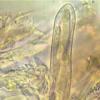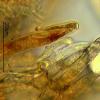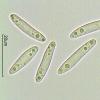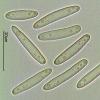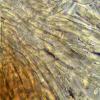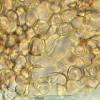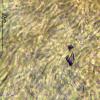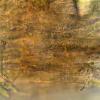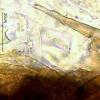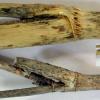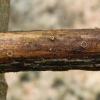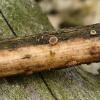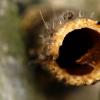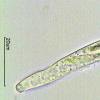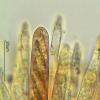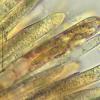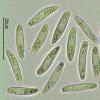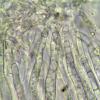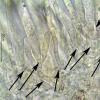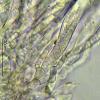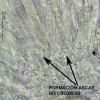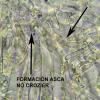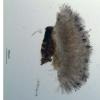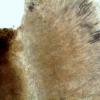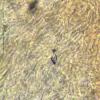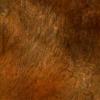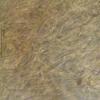
18-12-2025 21:17
Pol DebaenstThe identification took me to Byssonectria deformi

15-12-2025 07:09
 Danny Newman
Danny Newman
indet. Rutstroemiaceae sp. on unk. fallen leavesMc

19-12-2025 10:10
Patrice TANCHAUDBonjour, récolte réalisée en milieu dunaire, a

18-12-2025 17:23
 Bruno Coué
Bruno Coué
Bonjour,je serais heureux d'avoir votre avis sur c

18-12-2025 18:07
Margot en Geert VullingsThese plumes were found on rotten wood.They strong

17-12-2025 18:35
 Michel Hairaud
Michel Hairaud
Bonjour à tous/Hi to everyone I am passing along

15-12-2025 15:48
 Danny Newman
Danny Newman
Melanospora cf. lagenaria on old, rotting, fallen

15-12-2025 15:54
 Johan Boonefaes
Johan Boonefaes
Unknown anamorph found on the ground in coastal sa

15-12-2025 21:11
 Hardware Tony
Hardware Tony
Small clavate hairs, negative croziers and IKI bb

Hola a todos.
Subo unas fotos de un asco que hemos encontrado hoy casi seguro sobre ramitas de hinojo.
Miden hasta 2 mm de diámetro.
Esporas de 17-27 x 4-5 micras.
Ascas IKI- (no aprecio reacción hemiamiloide) y creo que aporrincas.
Paráfisis lanceoladas hialinas de perfil rugoso y con presencia de cristales (creo)
¿Qué les parece? Pensé en Trichopeziza "perrotioides" pero tengo dudas.
Gracias por su ayuda.
Rubén

thanks for this wonderful documentation! It is obviously very close to my Trichopeziza "perrotioides", e.g. in the rough paraphyses, but differs in much larger straight spores. Are the hairs not longer than about 100 µm? The asci are obviously inamyloid, but it would be great if you succeed to make a photo of the ascus base (perrotioides is without croziers).
Please keep this sample in your herbarium, I am sure it will be needed in a future study, e.g. for a sequence. Could well be a new species.
You can try lookin at the anatomy of the stem, I have here photos of Foeniculum.
Zotto

Hola a todos.
Gracias por su ayuda, Zotto. Bonitas fotos! Yo no consigo hacer macro tan bueno de tallo de Foeniculum.
He mirado base de ascas y no he visto croziers. A verces parece que sí por la formación de nueva asca. Pongo fotos.
Los pelos son más grandes, miden aproximadamente hasta 250 micras, pero a veces saco fotos a pequeños para ver la formación.
Paso fotos de esporas recién expulsadas del asca y tienen medidas de anchura algo menor (3,3-4,3 micras) y también de asca IKI-.
Saludos
Rubén

Your stem differs from mine in lacking the thick internal parenchyma. Also I wonder whether there are vascular bundles at different levels, not only in one row. That would be typical of monocots! To clarify this you could try a section viewed under the microscope (100x).


